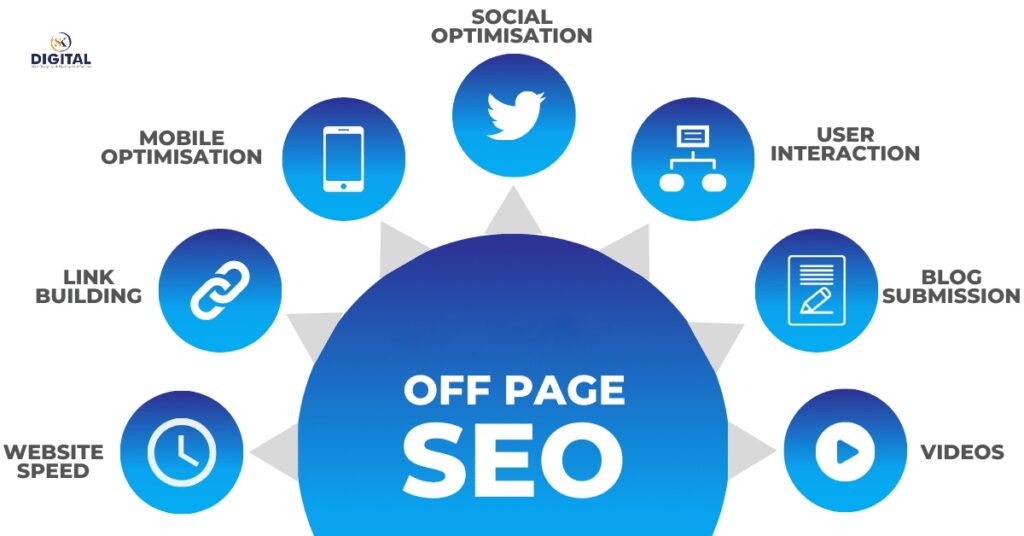Comprehensive Guide to On-Page Search Engine Optimization
Introduction to On-Page SEO

In the vast landscape of digital marketing, On-Page Search Engine Optimization (SEO) stands as a critical pillar for enhancing a website’s visibility and performance on search engine results pages (SERPs). This comprehensive guide delves into the intricacies of On-Page SEO, offering actionable insights, best practices, and strategies to optimize web pages effectively.

Understanding On-Page SEO
Table of Contents
1.1 Definition and Importance
On-Page SEO involves optimizing individual web pages to rank higher and attract organic traffic. Understanding its importance is foundational to a successful digital marketing strategy.
1.2 How On-Page SEO Differs from Off-Page SEO
Distinguishing between On-Page and Off-Page SEO is crucial for a holistic approach to search engine optimization.
1.3 Evolution of On-Page SEO Practices
The landscape of On-Page SEO is dynamic, influenced by search engine algorithms and user behavior. Exploring its evolution is essential for staying ahead.

Keyword Research and Analysis
2.1 Importance of Keywords in On-Page SEO
Keywords are the building blocks of On-Page SEO. Learn why they matter and how they impact search engine rankings.
2.2 Conducting Keyword Research
Uncover effective strategies and tools for conducting keyword research, identifying phrases that resonate with your target audience.
2.3 Long-Tail Keywords and Their Significance
Long-tail keywords play a pivotal role in niche targeting. Understand their significance and how to leverage them for optimal results.
2.4 Tools for Keyword Research
Explore a variety of tools that simplify and enhance the keyword research process.
Content Optimization
3.1 Crafting High-Quality Content
Quality content is the cornerstone of On-Page SEO. Discover the elements that make content stand out to both users and search engines.
3.2 Importance of Unique and Engaging Content
Uniqueness and engagement are key factors in content optimization. Learn how to captivate your audience while meeting search engine criteria.
3.3 Keyword Placement and Density
Strategically placing keywords within content and maintaining an optimal keyword density is essential. Find the right balance for optimal results.
3.4 Heading Tags and Their Role
Heading tags structure content for both readers and search engines. Uncover the hierarchy and significance of heading tags in On-Page SEO.
3.5 Importance of Meta Descriptions
Meta descriptions serve as your content’s first impression on the SERPs. Learn how to craft compelling meta descriptions for higher click-through rates.
3.6 Image Optimization Techniques
Images enhance user experience, but they also impact page load times. Discover techniques for optimizing images without compromising quality.
3.7 Utilizing Multimedia for SEO
Diversifying content with multimedia elements positively influences user engagement and SEO. Explore the integration of videos, infographics, and more.
3.8 Content Freshness and Regular Updates
Search engines favor updated content. Develop strategies to keep your content fresh and relevant to maintain search engine rankings.
URL Structure and Permalinks
4.1 Creating SEO-Friendly URLs
The structure of your URLs plays a role in search engine rankings. Understand how to create user-friendly and SEO-optimized URLs.
4.2 Importance of Permalink Structure
Permalinks are permanent URLs to your individual pages. Learn how to structure permalinks for readability and SEO benefits.
4.3 URL Parameters and Their Impact
Explore the impact of URL parameters on SEO and strategies to manage them effectively.
Page Speed Optimization
5.1 Significance of Page Loading Speed
Page speed directly influences user experience and search engine rankings. Discover why it’s a critical factor in On-Page SEO.
5.2 Tools for Measuring Page Speed
Utilize tools to assess and analyze your page speed, identifying areas for improvement.
5.3 Techniques for Improving Page Speed
Implement practical techniques, such as browser caching, image optimization, and minimizing HTTP requests, to enhance your website’s loading speed.
5.4 Mobile Page Speed Considerations
With the increasing use of mobile devices, optimizing page speed for mobile users is paramount. Learn how to cater to this essential audience.
Mobile Optimization
6.1 Mobile-First Indexing
Understand the concept of mobile-first indexing and its implications for your website’s search engine performance.
6.2 Responsive Design
Implement responsive design principles to ensure your website adapts seamlessly to various screen sizes and devices.
6.3 Accelerated Mobile Pages (AMP)
Explore the benefits and implementation of Accelerated Mobile Pages to enhance mobile user experience and search engine visibility.
6.4 Mobile-Friendly Testing Tools
Use testing tools to assess your website’s mobile-friendliness and address any issues that may affect its performance on mobile devices.
Technical SEO
7.1 Importance of Technical SEO
Technical SEO involves optimizing the technical aspects of your website for search engines. Understand its significance and impact on overall SEO performance.
7.2 XML Sitemaps
Learn the importance of XML sitemaps in helping search engines understand your website’s structure and content.
7.3 Robots.txt File
Explore the role of the robots.txt file in guiding search engine crawlers and controlling which parts of your site they should or shouldn’t access.
7.4 Canonical Tags
Understand the use of canonical tags to avoid duplicate content issues and consolidate page authority.
7.5 Structured Data Markup
Implement structured data markup to provide search engines with context about your content, leading to enhanced rich snippets in search results.
7.6 SSL Encryption and its Impact on SEO
Discover how implementing SSL encryption not only secures your website but also positively influences search engine rankings.
7.7 Pagination and SEO
Effectively manage paginated content to ensure search engines properly index and rank each page.
User Experience (UX) Optimization
8.1 Importance of UX in SEO
User experience is a ranking factor. Learn how positive UX impacts SEO and user engagement.
8.2 Navigation and Site Structure
Optimize website navigation and structure for a seamless user experience and improved search engine crawlability.
8.3 Bounce Rate and Dwell Time
Understand the significance of bounce rate and dwell time, and strategies to improve these metrics for better SEO performance.
8.4 Mobile-First Design for Enhanced UX
Prioritize mobile-first design principles to ensure a consistent and positive user experience across all devices.
For More Information visit on: SK Digital Web Service



